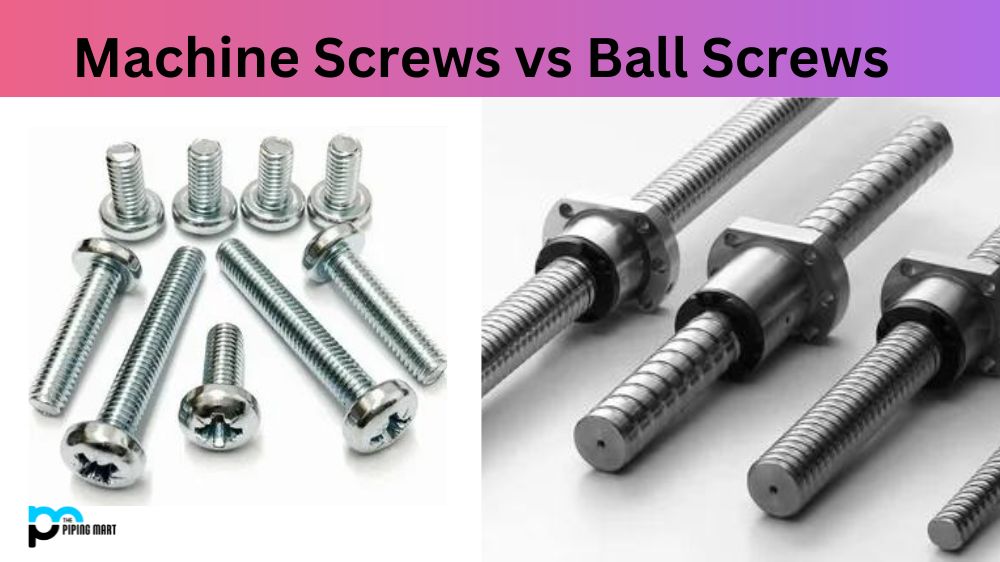If you’re working on a project requiring linear motion and precision, you’ll need to choose the right screw to make it happen. Machine screws and ball screws are two of the most popular options for creating smooth and accurate movement, but which one is right for you? In this blog post, we’ll take a closer look at the key differences between machine screws and ball screws, helping you to make an informed decision for your next project.
What is Machine Screw?
A Machine Screw is a fastener used in many applications to hold two pieces of material together. It consists of a threaded metal cylinder with a head designed to fit into an opening in the securing material. Unlike wood screws, machine screws are held in place by tightening nuts or threading them directly into the material they are being applied to. They can be made from various materials such as steel, brass, stainless steel and aluminium per the requirements needed for their application. Machine screws are often seen on devices like computer casings or electronic equipment where smaller sizes can be used and provide greater strength, powerful enough to securely fasten them onto their respective materials.
What is Ball Screw?
A ball screw is a mechanical linear actuator that converts rotational motion to linear motion with little friction. It consists of a screw, nut and balls made of hard-wearing material. The rotating screw thread interacts with the hardened steel balls inside the nut to transfer energy in both directions along its axis. As the ball rollers reduce contact friction, this enables higher levels of efficiency and precision than traditional lead screws. Ball screws are used in various applications, such as machine tools, robotics and aerospace engineering.
Difference Between Machine Screw and Ball Screw
Design
Machine screws are simple devices that consist of a continuous helix or thread wrapped around a cylindrical shaft. They rely on friction to move along the threads, and the movement can be quite jerky compared to a ball screw. Ball screws have a unique design incorporating ball bearings within the threads, resulting in a much smoother and more efficient transfer of motion.
Applications
Machine screws are often used in applications requiring stability and accuracy but not speed. Examples of these applications include 3D printers, CNC machines, and camera sliders. Ball screws, on the other hand, are ideal for applications that demand high speed and accuracy. They are often found in robots, aircraft, and other high-performance machinery.
Efficiency
Ball screws are much more efficient than machine screws, which can transmit more power for the same amount of input. This translates to a higher level of precision and less wear and tear on the machinery over time. In comparison, machine screws require more input power to achieve the same output level, making them less efficient overall.
Cost
Machine screws are typically less expensive than ball screws, which makes them a popular choice for projects with limited budgets. However, these cost savings may come at a cost to accuracy and precision, especially in high-speed or high-performance applications. Ball screws may be more expensive, but their superior performance and efficiency make them worth the investment.
Maintenance
Machine screws require regular maintenance, including lubrication and periodic cleaning. Ball screws, on the other hand, are self-lubricating and require minimal maintenance to keep them functioning properly. This makes them a popular choice for applications with options other than downtime.
Conclusion:
As we’ve seen, machine screws and ball screws have distinct differences in design, applications, efficiency, cost, and maintenance requirements. The right choice for your project will ultimately depend on your specific needs and budget. Remember, when creating precise and accurate linear motion, choosing the right screw for the job is important!

Hey, I’m Krutik, a casual blogger expert in the metal industry. I am passionate about providing valuable information to my readers. With a background in engineering and construction, I like playing Cricket & watching Netflix shows in my free time. Thank you for visiting my blog, and I hope you find my information helpful!




